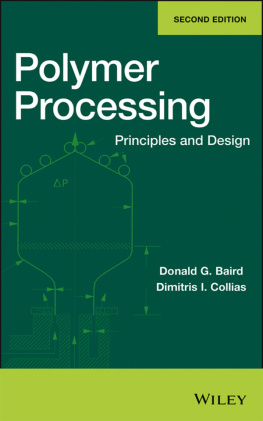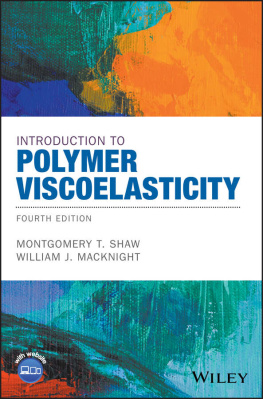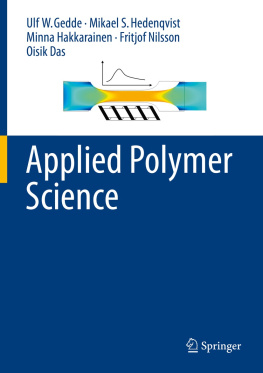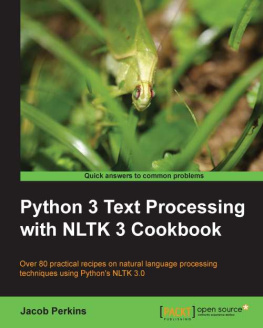
Copyright 2014 by John Wiley & Sons, Inc. All rights reserved.
Published by John Wiley & Sons, Inc., Hoboken, New Jersey.
Published simultaneously in Canada.
No part of this publication may be reproduced, stored in a retrieval system, or transmitted in any form or by any means, electronic, mechanical, photocopying, recording, scanning, or otherwise, except as permitted under Section 107 or 108 of the 1976 United States Copyright Act, without either the prior written permission of the Publisher, or authorization through payment of the appropriate per-copy fee to the Copyright Clearance Center, Inc., 222 Rosewood Drive, Danvers, MA 01923, (978) 750-8400, fax (978) 750-4470, or on the web at www.copyright.com. Requests to the Publisher for permission should be addressed to the Permissions Department, John Wiley & Sons, Inc., 111 River Street, Hoboken, NJ 07030, (201) 748-6011, fax (201) 748-6008, or online at http://www.wiley.com/go/permission.
Limit of Liability/Disclaimer of Warranty: While the publisher and author have used their best efforts in preparing this book, they make no representations or warranties with respect to the accuracy or completeness of the contents of this book and specifically disclaim any implied warranties of merchantability or fitness for a particular purpose. No warranty may be created or extended by sales representatives or written sales materials. The advice and strategies contained herein may not be suitable for your situation. You should consult with a professional where appropriate. Neither the publisher nor author shall be liable for any loss of profit or any other commercial damages, including but not limited to special, incidental, consequential, or other damages.
For general information on our other products and services or for technical support, please contact our Customer Care Department within the United States at (800) 762-2974, outside the United States at (317) 572-3993 or fax (317) 572-4002.
Wiley also publishes its books in a variety of electronic formats and by print-on-demand. Not all content that is available in standard print versions of this book may appear or be packaged in all book formats. If you have purchased a version of this book that did not include media that is referenced by or accompanies a standard print version, you may request this media by visiting http://booksupport.wiley.com. For more information about Wiley products, visit us at www.wiley.com.
Library of Congress Cataloging-in-Publication Data:
Baird, Donald G.
Polymer processing : principles and design / by Donald G. Baird, Department of Chemical Engineering, Virginia Polytechnic Institute and State
University, Blacksburg, VA, Dimitris I. Collias, Procter & Gamble Co., Cincinnati, OH. Second edition.
pages cm
Includes index.
ISBN 978-0-470-93058-8 (cloth)
1. Thermoplastics. I. Collias, Dimitris I. II. Title.
TP1180.T5B26 2014
668.423dc23
2013021897
PREFACE
Since the appearance of the first edition of this textbook in 1995 the main changes that have occurred in the field of polymer processing are the use of polymers from renewable resources and more interest in recycling and reprocessing of polymers (i.e., green engineering). Furthermore, processing technology for the most part has not changed significantly except for a technique referred to as microinjection molding, a process designed to deliver extremely small parts (1.0 mg in mass). Hence, the coverage of material as outlined in the original preface can still be followed. We outline the major changes in the textbook below.
Because the field of polymer processing has not changed drastically since the appearance of the first edition of this book nearly 20 years ago, there are no major changes in the overall thrust and purpose of the book. The goal of the book remains unchanged and is to teach the basic principles needed in the design of polymer processing operations for thermoplastics. The main change in the field has been in the area of microinjection molding in which objects such as miniature gears and biomedical devices weighing only a fraction of a gram are produced. Although the general features of the process rely on injection molding, there are still some differences in the design considerations of the process because of the high shear rates and high temperatures required during processing. We have added discussion of the microinjection molding process in Chapter 10.
The major change in the field of polymer processing is the polymers that are processed, which is driven by the need to practice green engineering. There is a greater interest in the processing of polymers from renewable resources and reprocessing (i.e., recycling) of polymers that have already been subjected to a processing history. For this reason a new chapter, Chapter 11, has been added to the book, which is concerned with the recycling of thermoplastics and the processing of renewable polymers. Because the decision to recycle a polymer or to use a polymer from renewable resources cannot be made without the appropriate analysis guided by the purpose to recycle, we introduce the concept of life cycle assessment (LCA), which provides a systematic method for determining whether recycling and which form of recycling is the proper environmental choice. Furthermore, we include background, which considers material and energy flows associated with various types of recycling streams as it is important that more energy not be used in recycling plastics than is required in the conversion of raw materials to virgin resin. Chapter 11 also includes discussion of the processing of new-to-world renewable polymers (i.e., polymers that come from renewable resources, e.g., carbohydrates, and are not identical to todays petroleum-derived polymers). Examples of these polymers are poly(lactic acid) (PLA), thermoplastic starch (TPS), and polyhydroxyalkanoate (PHA). The other category of renewable polymers is that of identical renewable polymers (also called bioidentical polymers), but these polymers require no new knowledge for processing as these renewable polymers have identical structure, performance, and processing to petroleum-derived polymers, with examples being bio-HDPE, bio-PP, and bio-poly(butylene succinate) (bio-PBS). The teaching of the subject matter in Chapter 11 can require five or six lectures to do it completely. However, the very basics such as those in Sections 11.1 and 11.2 coupled with an overview of the other sections can be done in two or three lectures. It is recommended that the students at least be exposed to the green engineering topics in Chapter 11.
The other additions to the book include discussion of the rheology of polymers containing fibers that serve to reinforce the solid polymer and the role of sparse long chain branching on the rheology of polymer melts. These topics are discussed in Chapter 3, and additional problems using the theory are found there also. Fiber suspensions have always been of interest and are included in books on processing of fiber composites. However, because these materials are processed by means of equipment used for thermoplastics and because of their importance in the generation of lightweight parts, we have included the subject matter in this book. Furthermore, the significant changes in the rheology and processing of polymers containing sparse long chain branching, that is, chains with less than about 10 long branches per chain (greater than the critical entanglement molecular weight), justify the inclusion of a brief coverage of this topic in Chapter 3.
Finally, in the first edition of this book we included numerical subroutines (International Mathematics and Statistical Libraries, IMSL, from Visual Numerics). However, the use of these subroutines requires knowledge of a higher level programming language, such as Fortran, which is typically not taught in the engineering curriculums any more. Hence, we have removed from the numerical examples the use of these specific subroutines and report only the numerical results that may have been obtained by means of either the IMSL subroutines or Excel or MATLAB. These solutions are available on the Wiley website (http://booksupport.wiley.com) and are listed via the example number and which numerical method is employed. Many engineering students have been exposed to MATLAB and certainly have access to Excel. The discussion of the use of the IMSL subroutines is also given on the website, but the subroutines are no longer included with the book.
Next page








